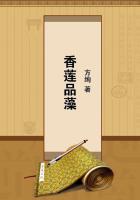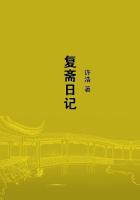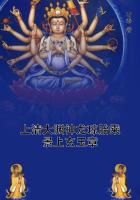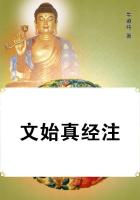Who does not remember the fantastic quarrel of the cook with the poor devil who had flavoured his dry bread with the smoke of the roast, and the judgment of Seyny John, truly worthy of Solomon? It comes from the Cento Novelle Antiche, rewritten from tales older than Boccaccio, and moreover of an extreme brevity and dryness. They are only the framework, the notes, the skeleton of tales. The subject is often wonderful, but nothing is made of it: it is left unshaped. Rabelais wrote a version of one, the ninth.
The scene takes place, not at Paris, but at Alexandria in Egypt among the Saracens, and the cook is called Fabrac. But the surprise at the end, the sagacious judgment by which the sound of a piece of money was made the price of the smoke, is the same. Now the first dated edition of the Cento Novelle (which were frequently reprinted) appeared at Bologna in 1525, and it is certain that Rabelais had read the tales. And there would be much else of the same kind to learn if we knew Rabelais' library.
A still stranger fact of this sort may be given to show how nothing came amiss to him. He must have known, and even copied the Latin Chronicle of the Counts of Anjou. It is accepted, and rightly so, as an historical document, but that is no reason for thinking that the truth may not have been manipulated and adorned. The Counts of Anjou were not saints. They were proud, quarrelsome, violent, rapacious, and extravagant, as greedy as they were charitable to the Church, treacherous and cruel. Yet their anonymous panegyrist has made them patterns of all the virtues. In reality it is both a history and in some sort a romance; especially is it a collection of examples worthy of being followed, in the style of the Cyropaedia, our Juvenal of the fifteenth century, and a little like Fenelon's Telemaque. Now in it there occurs the address of one of the counts to those who rebelled against him and who were at his mercy.
Rabelais must have known it, for he has copied it, or rather, literally translated whole lines of it in the wonderful speech of Gargantua to the vanquished. His contemporaries, who approved of his borrowing from antiquity, could not detect this one, because the book was not printed till much later. But Rabelais lived in Maine. In Anjou, which often figures among the localities he names, he must have met with and read the Chronicles of the Counts in manuscript, probably in some monastery library, whether at Fontenay-le-Comte or elsewhere it matters little. There is not only a likeness in the ideas and tone, but in the words too, which cannot be a mere matter of chance. He must have known the Chronicles of the Counts of Anjou, and they inspired one of his finest pages. One sees, therefore, how varied were the sources whence he drew, and how many of them must probably always escape us.
When, as has been done for Moliere, a critical bibliography of the works relating to Rabelais is drawn up--which, by the bye, will entail a very great amount of labour--the easiest part will certainly be the bibliography of the old editions. That is the section that has been most satisfactorily and most completely worked out. M. Brunet said the last word on the subject in his Researches in 1852, and in the important article in the fifth edition of his Manuel du Libraire (iv., 1863, pp. 1037-1071).
The facts about the fifth book cannot be summed up briefly. It was printed as a whole at first, without the name of the place, in 1564, and next year at Lyons by Jean Martin. It has given, and even still gives rise to two contradictory opinions. Is it Rabelais' or not?
First of all, if he had left it complete, would sixteen years have gone by before it was printed? Then, does it bear evident marks of his workmanship? Is the hand of the master visible throughout? Antoine Du Verdier in the 1605 edition of his Prosopographie writes: '(Rabelais')misfortune has been that everybody has wished to "pantagruelize!" and several books have appeared under his name, and have been added to his works, which are not by him, as, for instance, l'Ile Sonnante, written by a certain scholar of Valence and others.'
The scholar of Valence might be Guillaume des Autels, to whom with more certainty can be ascribed the authorship of a dull imitation of Rabelais, the History of Fanfreluche and Gaudichon, published in 1578, which, to say the least of it, is very much inferior to the fifth book.
Louis Guyon, in his Diverses Lecons, is still more positive: 'As to the last book which has been included in his works, entitled l'Ile Sonnante, the object of which seems to be to find fault with and laugh at the members and the authorities of the Catholic Church, I protest that he did not compose it, for it was written long after his death. I was at Paris when it was written, and I know quite well who was its author; he was not a doctor.' That is very emphatic, and it is impossible to ignore it.
Yet everyone must recognize that there is a great deal of Rabelais in the fifth book. He must have planned it and begun it. Remembering that in 1548 he had published, not as an experiment, but rather as a bait and as an announcement, the first eleven chapters of the fourth book, we may conclude that the first sixteen chapters of the fifth book published by themselves nine years after his death, in 1562, represent the remainder of his definitely finished work. This is the more certain because these first chapters, which contain the Apologue of the Horse and the Ass and the terrible Furred Law-cats, are markedly better than what follows them. They are not the only ones where the master's hand may be traced, but they are the only ones where no other hand could possibly have interfered.

